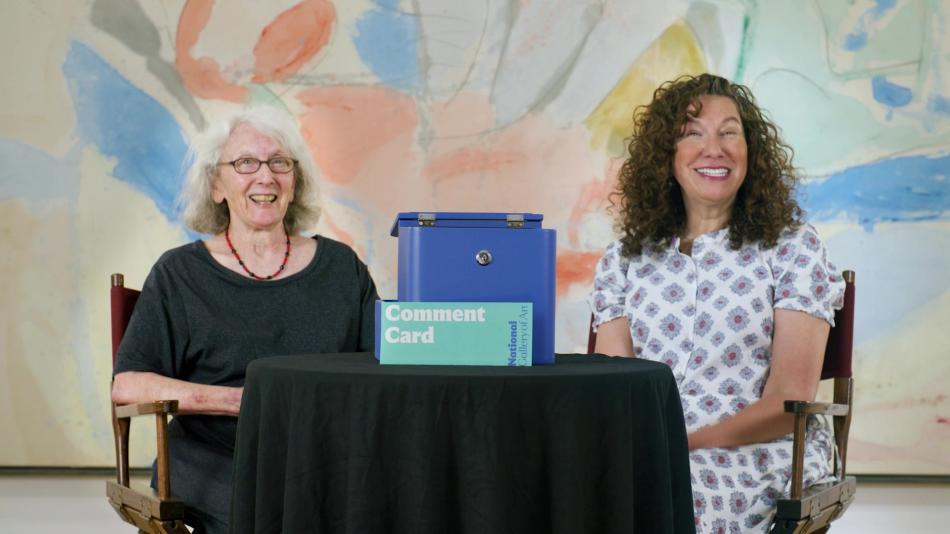Seated Youth
1917
Artist, German, 1881 - 1919

Seated Youth represents the fullest synthesis of Wilhelm Lehmbruck's sculptural style and is arguably his greatest achievement as an artist. In the originality of its formal language and its deeply expressive content, Seated Youth would influence sculptors as diverse as Alberto Giacometti and Henry Moore. Any serious attempt to appreciate the unique formal and thematic qualities of Seated Youth, however, must begin with the context of World War I and Lehmbruck's response to that modern conflagration.
We see a nude young man seated alone in a closed, self-contained, reflective, and melancholic pose. All nonessential elements have been eliminated, and we focus our attention solely on the expressive arrangement of the bowed head, the intertwined limbs, and the pockets of negative space that unite the form. This last aspect of the figure, its use of space, is especially powerful and reflects Lehmbruck's awareness of contemporary Parisian trends in sculpture. Anatomy is reduced, elongated, and abstracted. The formal language both underlies and reinforces the sculpture's expressive content. It is, in fact, the primary vehicle for conveying the grief, hopelessness, and despair that permeate the work.
Seated Youth is the visual equivalent of the rich and varied literature that emerged in the aftermath of World War I. It can be said to stand for all members of the "lost generation" referred to by the writers Gertrude Stein, Ernest Hemingway, Erich Maria Remarque, and Robert Graves and by the poets Siegfried Sassoon and Wilfred Owen. World War I represented the loss of hope for an entire generation. A poem by Lehmbruck titled "Is There Anybody Left?," written in 1918, attests to the sculptor's own feelings of despair:
Who has survived this bloodbath?
I tramp over this new cut field
And look at the harvest of men cruelly mown down.
Friends lie silent around me;
My brothers are no longer here.
Faith, love, everything has disappeared,
But death is everywhere, on every flower and every path.
Oh limitless curses on it!
You who have made so much death,
Have you none for me?
Seated Youth, subtitled "The Friend," portrays both survivor and mourner, one who questions his own existence while he meditates on and grieves over the loss of friends. It was Lehmbruck's final testament as a sculptor. In the postwar period, when all of Europe was in need of new cemeteries to bury the dead, the Kaiserberg War Cemetery in Duisburg, Germany (the city of Lehmbruck's birth), chose Seated Youth as its cemetery monument. In January 1919, Lehmbruck was selected as a member of the Prussian Academy of Arts in Berlin. Unable to recover from the trauma of the war years, however, and suffering from periods of deep depression, he committed suicide in March of that same year.

East Building Mezzanine, Gallery 217-A
Artwork overview
-
Medium
composite tinted plaster
-
Credit Line
-
Dimensions
overall: 103.2 x 76.2 x 115.5 cm (40 5/8 x 30 x 45 1/2 in.)
-
Accession
1974.49.1
More About this Artwork

Article: 34 Artworks About Love at the National Gallery
From first kisses to tragic romances, our collection abounds with love, in all its forms.

Video: What Sculpture Makes You Cry?
The National Gallery’s own Liz Diament and Alison Luchs answer your most asked questions in our fourth episode of Ask the National Gallery Anything.
Artwork history & notes
Provenance
Acquired 1917 from the artist by Sally Falk [1888-1962], Mannheim; gift August 1921 to the Städtische Kunsthalle, Mannheim;[1] (Buchholz Gallery, Berlin and New York);[2] sold 1939 to Walter P. Chrysler, Jr. [1909-1988], New York; sold May 1971 to (Dr. Claude Virsch, Kiel); sold 1974 to NGA.
[1] The sculpture was on loan from Falk to the Kunsthalle Mannheim from 1917 until 1921, when the gift became official.
[2] The sculpture was removed from the Städtische Kunsthalle on 8 July 1937 by the German government as "degenerate art," shipped to Munich, and possibly exhibited at the Degenerate Art show at the Haus de Kunst in Munich that year. It was acquired c. 1938 by Curt Valentin, of the Buchholz Gallery in New York, probably through the Buchholz Gallery in Berlin, which was one of the agents appointed by the German government's Commission for the Exploitation of Degenerate Art to sell objects purged from German museums.
Associated Names
Exhibition History
1917
Exhibition Hodler-Lehmbruck-Stoecklin, Kunsthalle, Basel, 1917.
1939
Curt Valentin Gallery, New York, 1939.
1941
Collection of Walter P. Chrysler, Jr., Virginia Museum of Art, Richmond; Philadelphia Museum of Art, 1941, no. 101, repro.
1972
The Art of Wilhelm Lehmbruck, National Gallery of Art, Washington, 1972, not in catalogue.
1978
Aspects of Twentieth-Century Art, National Gallery of Art, Washington, D.C., 1978-1979, no. 60, repro.
Bibliography
1984
Walker, John. National Gallery of Art, Washington. Rev. ed. New York, 1984: 649, no. 1027, repro., as Seated Youth (The Friend).
1994
Sculpture: An Illustrated Catalogue. National Gallery of Art, Washington, 1994: 132, repro.
2001
Schubert, Dietrich. Wilhelm Lehmbruck : Catalogue Raisonné der Skulpturen, 1898-1919. Worms, 2001:96, 316, no.1, pl. 40.
Inscriptions
proper right side of base: W. LEHMBRUCK / 1917
Wikidata ID
Q63854820


